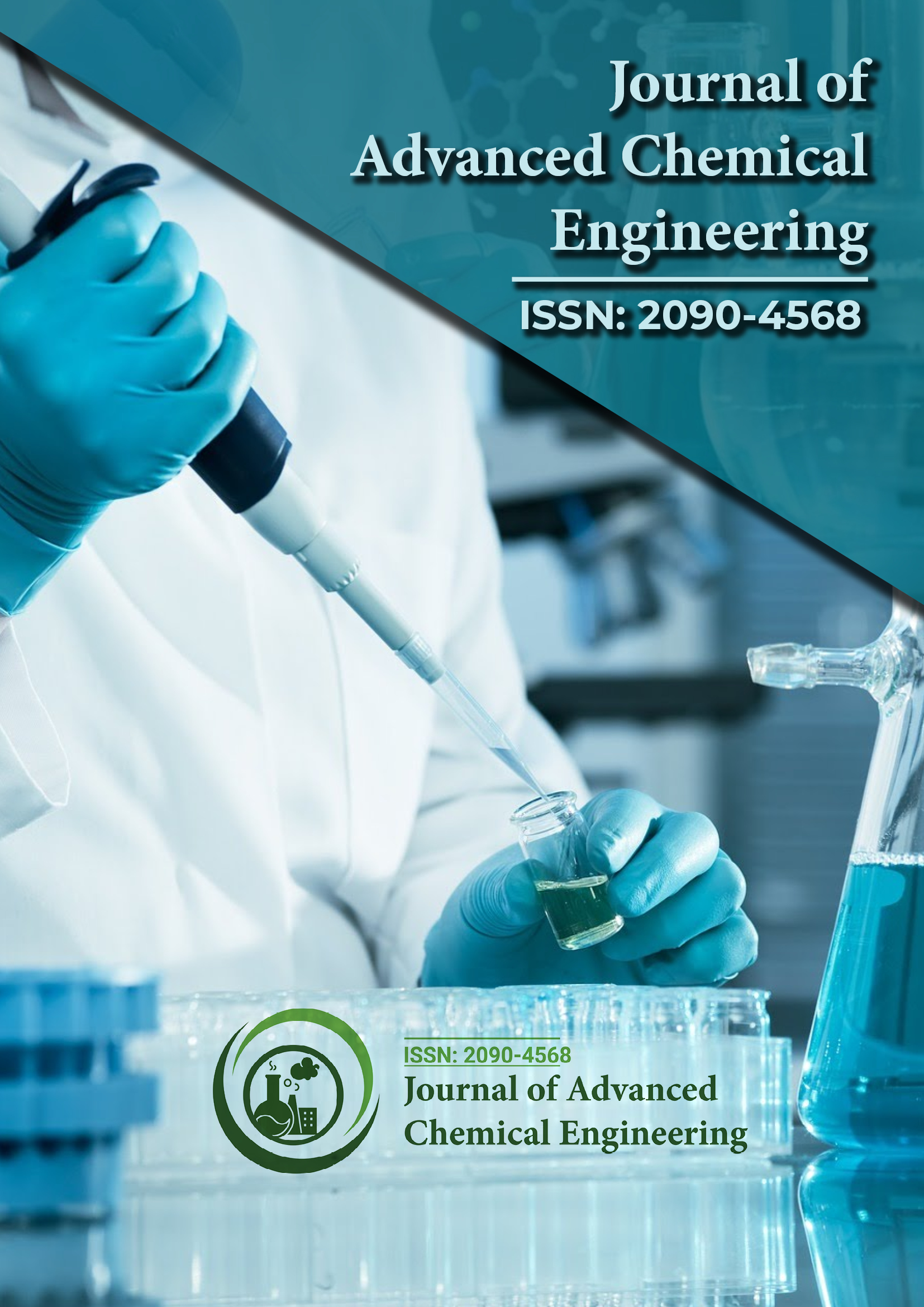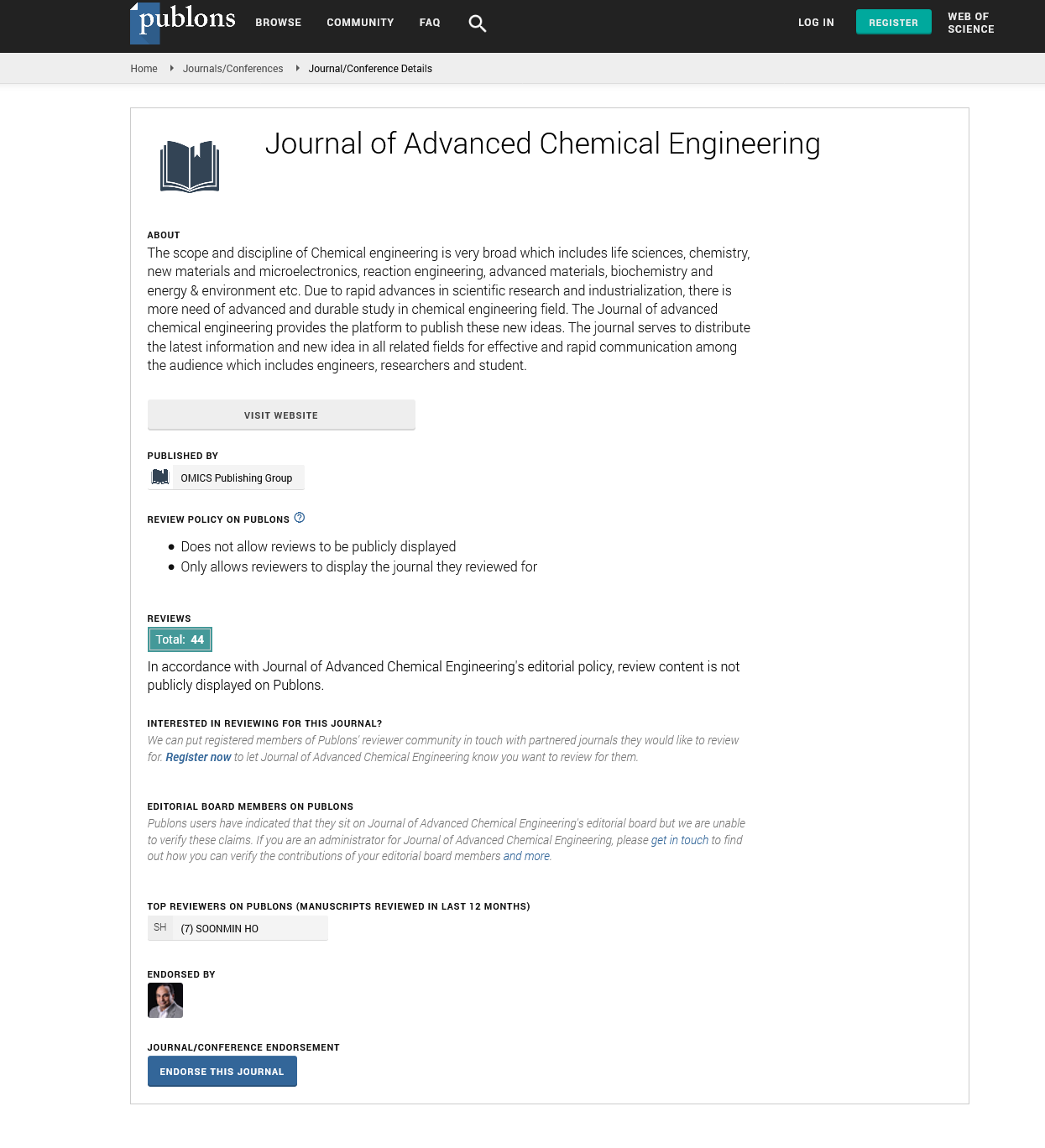Indexed In
- Open J Gate
- Genamics JournalSeek
- Smithers Rapra
- RefSeek
- Directory of Research Journal Indexing (DRJI)
- Hamdard University
- EBSCO A-Z
- OCLC- WorldCat
- Scholarsteer
- Publons
- Geneva Foundation for Medical Education and Research
- Google Scholar
Useful Links
Share This Page
Journal Flyer

Open Access Journals
- Agri and Aquaculture
- Biochemistry
- Bioinformatics & Systems Biology
- Business & Management
- Chemistry
- Clinical Sciences
- Engineering
- Food & Nutrition
- General Science
- Genetics & Molecular Biology
- Immunology & Microbiology
- Medical Sciences
- Neuroscience & Psychology
- Nursing & Health Care
- Pharmaceutical Sciences
Commentary - (2023) Volume 13, Issue 3
Enhancing Chemical Processes: The Facility of Reactor Design and Optimization
Evelyn Lee*Received: 02-Jun-2023, Manuscript No. ACE-23-22080; Editor assigned: 05-Jun-2023, Pre QC No. ACE-23-22080 (PQ); Reviewed: 19-Jun-2023, QC No. ACE-23-22080; Revised: 26-Jun-2023, Manuscript No. ACE-23-22080 (R); Published: 03-Jul-2023, DOI: 10.35248/2090-4568.23.13.288
Description
Chemical reactor design is a critical aspect of chemical engineering that involves the selection, sizing, and optimization of reactors for various chemical processes. Reactors play a central role in converting raw materials into desired products by facilitating chemical reactions under specific conditions. Effective reactor design ensures optimal reaction rates, high product yields, and efficient energy utilization.
Principles of chemical reactor design
Chemical reactor design is guided by key principles rooted in chemical kinetics, thermodynamics, and transport phenomena. Understanding the reaction kinetics helps determine the reaction rate, reaction mechanisms, and the optimal operating conditions for achieving the desired conversion and selectivity. Thermodynamic considerations, such as equilibrium conversions and reaction enthalpies, guide the determination of reactor operating conditions, ensuring the feasibility and stability of the process.
Design considerations and optimization
Several factors need to be considered in chemical reactor design to ensure efficient and safe operation. These factors include reaction kinetics, reactant and product properties, heat transfer, mass transfer, pressure drop, reactor materials, and safety considerations. By carefully analyzing these factors, engineers can select appropriate reactor types and optimize the design for a specific process.
Reactant and product properties, including their physical and chemical properties, phase behavior, reactivity, and stability, influence reactor selection and design. Understanding the heat transfer requirements is significant for controlling temperature profiles, preventing hotspots, and maximizing energy efficiency. Similarly, considering mass transfer limitations is essential to ensure uniform reactant/product distribution and effective utilization of catalysts.
Pressure drop analysis is vital to design reactors that can handle the desired flow rates without excessive pressure losses. Reactor materials must be carefully chosen to withstand the process conditions, including temperature, pressure, and reactant/ product corrosiveness. Reactors can be optimized through various approaches, including reactor sizing, catalyst selection, temperature and pressure control, and flow pattern optimization. Reactor sizing involves determining the appropriate reactor volume or residence time to achieve the desired conversion and selectivity. Catalyst selection is critical for maximizing reaction rates, selectivity, and catalyst life. Temperature and pressure control strategies help maintain optimal reaction conditions, while flow pattern optimization ensures uniform reactant/ product distribution and minimizes side reactions.
Reactor optimization often involves utilizing mathematical modeling and computational simulations. These tools allow engineers to simulate and analyze reactor performance under different operating conditions, evaluate the impact of design changes, and identify optimization opportunities. By leveraging modeling and simulation, engineers can reduce experimental trial and error, optimize reactor performance, and accelerate process development.
Conclusion
Chemical reactor design is a vital aspect of chemical engineering, ensuring efficient and safe operation of chemical processes. By considering reaction kinetics, thermodynamics, and transport phenomena, engineers can select the appropriate reactor type, size reactors, and optimize operating conditions. Reactor design factors in reactant and product properties, heat transfer, mass transfer, pressure drop, and safety considerations. Optimization techniques, such as reactor sizing, catalyst selection, temperature and pressure control, and flow pattern optimization, further enhance reactor performance. Through effective reactor design and optimization, chemical engineers can improve reaction rates, product yields, energy efficiency, and overall process economics.
Citation: Lee E (2023) Enhancing Chemical Processes: The Facility of Reactor Design and Optimization. Adv Chem Eng. 13:288.
Copyright: © 2023 Lee E. This is an open-access article distributed under the terms of the Creative Commons Attribution License, which permits unrestricted use, distribution, and reproduction in any medium, provided the original author and source are credited.

